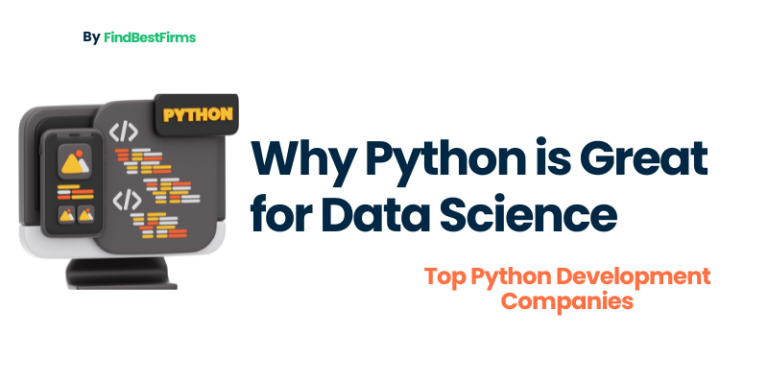Python has emerged as one of the most popular programming languages in the world, particularly in the realm of data science. Its versatility, simplicity, and rich ecosystem of libraries make it the top choice for data professionals.
What Makes Python Stand Out in Data Science?
Easy-to-Learn Syntax
Python’s syntax is clean, intuitive, and easy to grasp, even for beginners. This simplicity allows data scientists to focus more on solving data problems rather than wrestling with complex programming constructs. Python’s language design emphasizes readability, which reduces the learning curve and makes code maintenance easier.
Flexibility for Diverse Data Science Tasks
Python is not confined to a single purpose; it excels across a range of tasks including data cleaning, visualization, statistical analysis, machine learning, and deep learning. This flexibility allows data scientists to use Python as an all-in-one tool for end-to-end data workflows, from data preprocessing to model deployment.
Cross-Platform Compatibility
Python runs seamlessly on various platforms, including Windows, macOS, and Linux. This cross-platform functionality ensures that Python-based data science projects can be easily shared and executed across different environments, enhancing collaboration and scalability.
How Do Python Libraries Enhance Data Science?
Python owes much of its popularity in data science to its extensive library ecosystem. These libraries simplify complex tasks, allowing data scientists to perform operations with minimal code.
Data Processing and Analysis
NumPy: A cornerstone library for numerical computation, NumPy offers robust support for arrays, matrices, and mathematical functions. Its high-performance operations make it essential for handling large datasets.
Pandas: Known as the Swiss Army knife of data manipulation, Pandas provides powerful tools for data cleaning, transformation, and analysis. Its DataFrame structure makes it easy to handle structured data intuitively.
Visualization and Storytelling
Matplotlib: This library enables the creation of static, animated, and interactive visualizations. From bar charts to complex 3D plots, Matplotlib offers unmatched versatility.
Seaborn: Built on top of Matplotlib, Seaborn simplifies the creation of aesthetically pleasing and informative statistical graphics. It is particularly useful for exploring data distributions and relationships.
Advanced Machine Learning
Scikit-learn: A go-to library for machine learning, Scikit-learn supports tasks like classification, regression, clustering, and dimensionality reduction. Its user-friendly interface and pre-built algorithms accelerate model development.
TensorFlow and PyTorch: These frameworks are indispensable for deep learning. They provide tools to build and train neural networks, enabling applications like image recognition, natural language processing, and recommendation systems.
Why Is Python Preferred for Big Data and AI?
Compatibility with Big Data Technologies
Python is very compatible with big data frameworks such as Apache Spark and Hadoop. With libraries such as PySpark, data scientists can process and analyze massive datasets efficiently. This capability makes Python an ideal choice for handling the growing demands of big data.
Efficient Model Deployment Tools
The languages are highly supportive of frameworks like Flask and FastAPI that support deploying machine learning models as APIs. This integration will help the AI solutions be scaled up and integrated into the production systems easily, hence making it less difficult to bridge between development and deployment.
Scalability and Performance
Despite being an interpreted language, the scalability and performance of Python are enhanced through libraries written in C, such as NumPy and TensorFlow. Furthermore, tools like Dask enable parallel computing, further boosting Python’s capability to handle large-scale data science projects.
What Real-Life Problems Has Python Solved in Data Science?
Fraud Detection in Banks
Python has significantly aided the development of fraudulent transaction-detecting machine learning models. Libraries like Scikit-learn helped the banks in building algorithms to detect patterns that could raise a red flag within transactions, hence saving more financial losses.
Personalized Marketing in E-commerce
Python powers the e-commerce industry, making recommendations to customers. With Pandas and Scikit-learn libraries, recommendation systems in most cases help to have individual shopping experiences, thereby boosting the rate of retaining customers.
Predictive Analytics in Healthcare
Python has revolutionized healthcare by making predictive analytics possible. For example, TensorFlow and PyTorch are used to develop deep learning models that predict disease outbreaks, optimize treatment plans, and improve patient outcomes.
Improving Supply Chain Efficiency
Python’s data processing capabilities have been utilized to optimize supply chain operations. From demand forecasting to route optimization, Python helps businesses reduce costs and improve delivery efficiency.
Can Python Sustain Its Popularity in Data Science?
New Advancements in AI and Deep Learning Libraries
Python is continuously updating its libraries and offering state-of-the-art tools for AI and deep learning. For example, it offers frameworks like Hugging Face for natural language processing and OpenCV for computer vision that are breaking barriers for what can be accomplished in Python.
Community Contributions Going on
Python has an active and vibrant community of developers and data scientists. This community is always contributing to open-source projects, which makes Python relevant and updated with the latest advancements in data science.
Adoption by Top Python Development Companies
Many Top Python Development Companies specialize in creating robust data science solutions. These companies use the capabilities of Python to deliver customized tools and applications, further solidifying Python’s position in the industry.
Conclusion
The reason Python dominated data science is that the syntax is easy to understand, the library ecosystem covers everything, and it works easily with modern technologies. From big data to machine learning models or even visualizations, one can always find it the best.
Top Python Development Companies will be a game-changer for businesses looking to harness the power of data science. Such companies are well-equipped to bring out the best in Python and enable organizations to unlock the hidden value and drive innovation.
The ever-evolving world of data science finds a trusted ally in Python, empowering professionals to turn data into actionable intelligence. Versatility and community-driven growth will ensure that Python remains at the forefront of this data-driven era.

